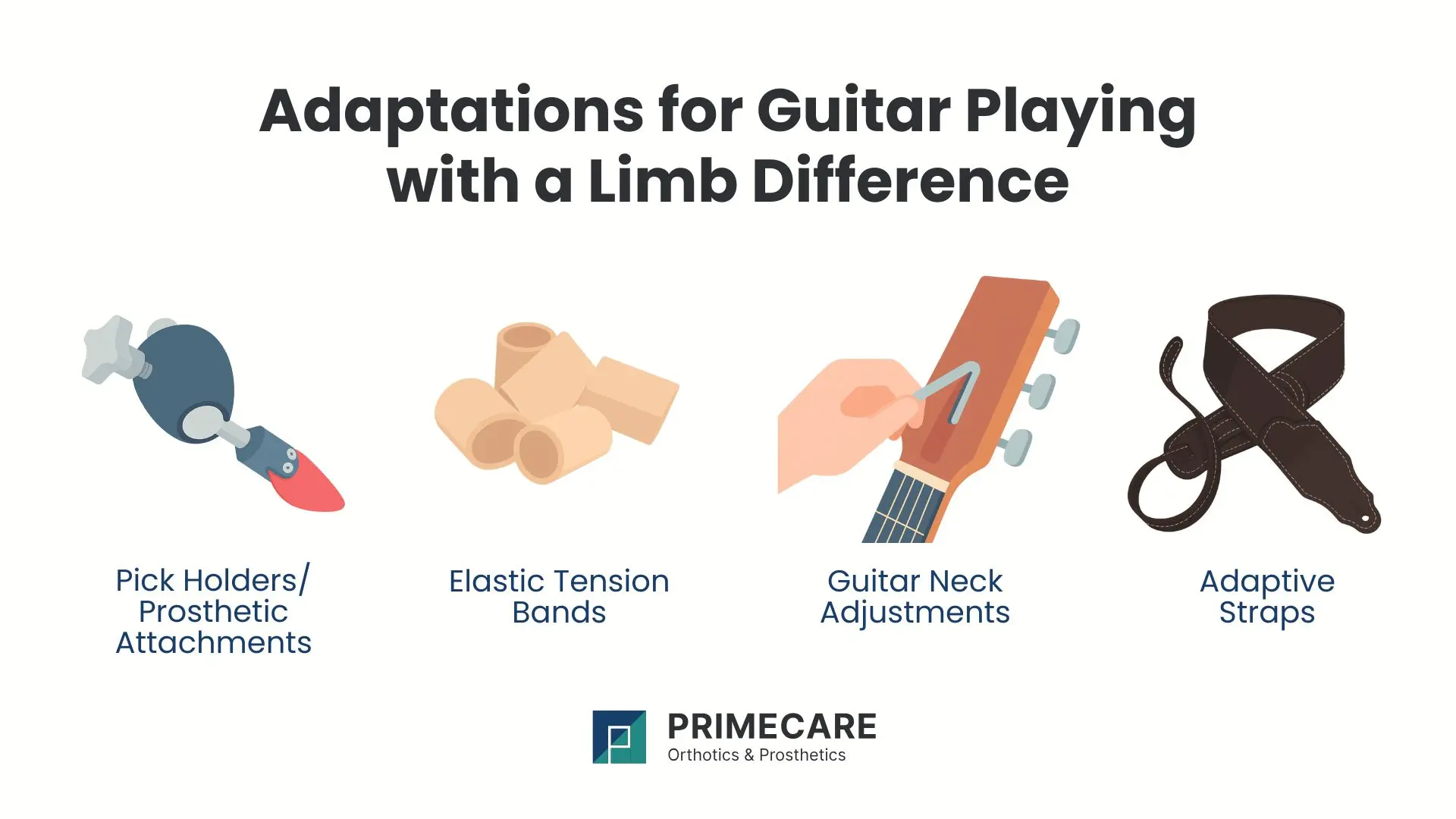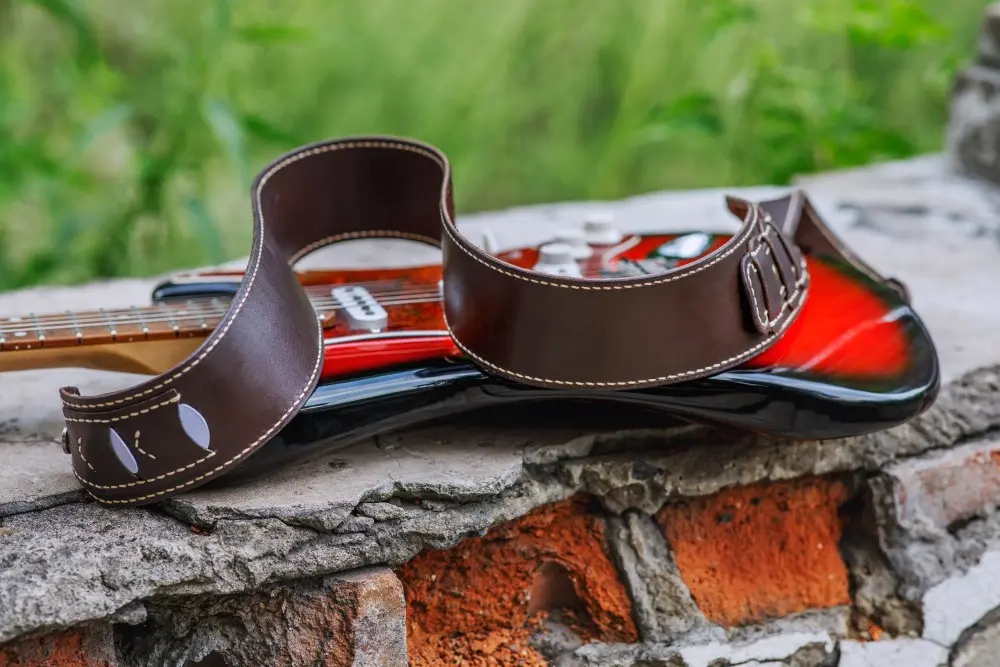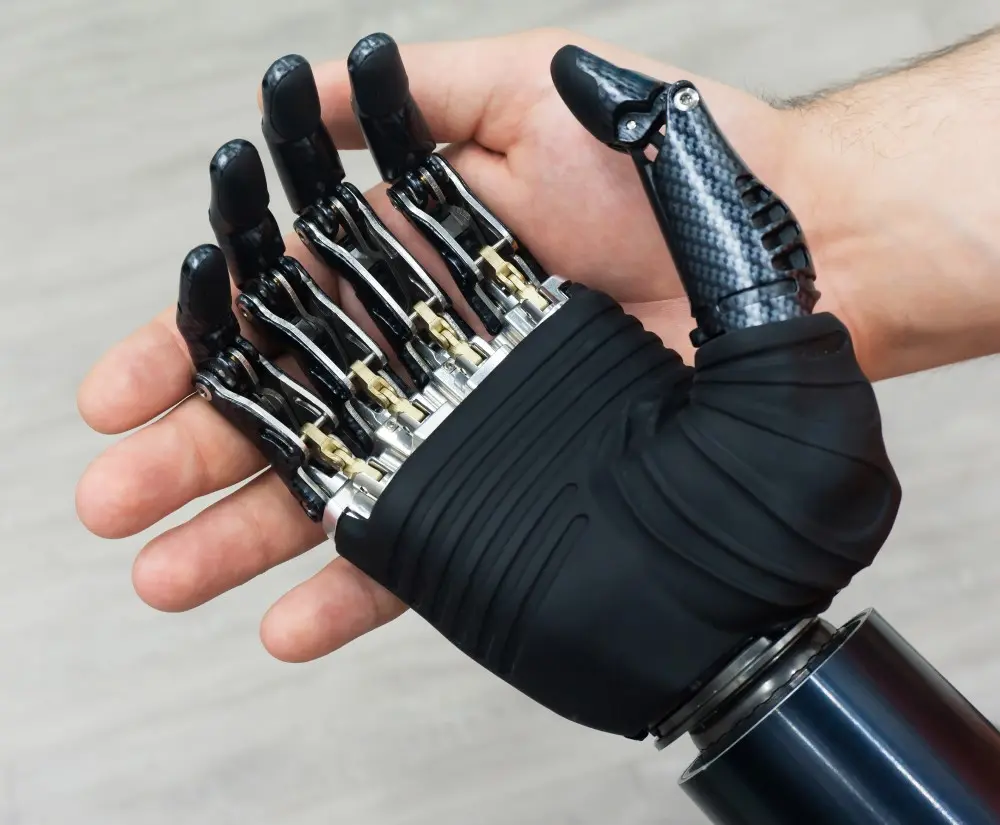People with limb differences or those with one hand can absolutely play guitar. Whether you're using a prosthetic arm or adapting your technique, playing an instrument is completely possible, and the music world is open to you.
At PrimeCare, a leading provider of custom arm prosthetics in New Mexico, we believe that prosthetics can enhance the lives of musicians, helping them regain the ability to play instruments and pursue their passion.
Whether you're looking for a prosthetic arm that can support your musical journey or need guidance on how to play guitar with a prosthetic arm, this blog will answer all your questions and give you the confidence you need to get started.
Is It Easy to Play Guitar with a Prosthetic Arm?
You don’t necessarily need a prosthetic arm to play guitar, as many musicians play without one, adapting their techniques to their body. However, for those who use a prosthetic arm or other upper-limb devices, it’s completely possible to play guitar with some practice. The key is finding the right tools and developing a technique that works for you.
Many musicians with limb differences are thriving in their guitar playing by using creative solutions to adapt. All it takes is the right modifications, practice, and patience. Just like gardening, dancing, or any other hobby, playing guitar can become a fulfilling activity when you find the right approach and tools.

What Do You Need to Play Guitar with a Prosthetic Arm or Adaptation?
You don’t need a prosthetic arm to play guitar, but if you do use one, or rely on other adaptive methods, having the right setup can make a big difference in how natural your playing feels. Whether you’re using finger prosthetics, simple adaptive tools, or just creative positioning, it’s all about finding what works best for your body and your instrument.
Here’s what you’ll need to get started:
- Prosthetic arm (if you choose to use one) with the ability to grip the guitar or press strings comfortably.
- Finger prosthetics (or other types of below-the-elbow prosthetics) or other assistive tools to help with precision on the guitar neck and control over the strings.
- Adaptive tools, like a pick holder or strap attachment, if you need help with strumming.
- Guitar modifications — many players lower the string height or slightly adjust the neck angle for smoother access and comfort.
Learning what feels most natural will take some experimentation, and that’s completely fine. It’s all a learning curve and part of the process. Each musician with a limb difference or prosthetic finds their own rhythm — some play with one hand, others with customized tools. What matters most is discovering your own way to enjoy making music.
Prosthetic Tools and Modifications for Guitarists
Once you’ve mastered your basic setup, certain tools and modifications can make the experience of playing guitar even more intuitive and enjoyable. These options are especially helpful for guitarists who want to improve their control, grip, and reach, regardless of whether they use a prosthetic arm.
Pick Holders or Prosthetic Attachments
Custom attachments that hold your pick securely can let you strum smoothly and consistently, making it easier to maintain control while playing. Whether you're using a prosthetic arm or adaptive tools, these attachments can help you achieve the needed precision for strumming.
Elastic Tension Bands
You can add elastic tension bands to your prosthetic arm to provide added control when pressing strings. This is especially useful during long sessions, as the bands help maintain stability and resistance. In return, it’s easier to execute precise movements with your prosthetic arm.
Guitar Neck Adjustments
If you're struggling to access certain frets or reach specific notes, consider having your guitar's neck or string action fine-tuned by a professional luthier. Guitar neck adjustments can make the instrument feel much more comfortable and make it easier to access all areas of the fretboard, especially if you're using prosthetics or adapting your technique.

Techniques for Playing Guitar with a Prosthetic Arm or Adaptation
If you're using a prosthetic arm or adaptive tools, certain techniques can make your guitar-playing experience more comfortable and efficient:
- Finger positioning: Focus on left-hand index finger placement and pressing the strings correctly.
- Strumming: Use a prosthetic arm attachment or pick holder for comfortable strumming, especially if you're using one hand.
- Practice: Practice will help develop muscle memory for more accurate playing and chord changes.
- Neck adjustments: Modify the guitar neck to suit your prosthetic arm for better comfort and control.
Common Challenges and Solutions for Playing Guitar with a Limb Difference
When it comes to playing guitar with a prosthetic arm or adaptations, it’s normal to face challenges. Whether you're learning to use your prosthetic arm for strumming or pressing strings, overcoming these obstacles takes time, but solutions are out there:
- Strumming with one hand: It may be hard to strum without a full hand. Pick holders or prosthetic attachments can make this easier.
- Finger placement on the neck: Pressing the strings correctly might feel awkward at first. Practice and finger prosthetics can help improve precision.
- Fatigue and discomfort: Prolonged playing might be uncomfortable in the prosthetic. Make sure to modify your setup for comfort and take breaks often.
Motivation to Keep Playing Guitar as an Amputee

The process of learning to play guitar with a prosthetic arm or using adaptations can be challenging, but it’s also incredibly rewarding. Staying motivated is key to overcoming any challenges you face.
Here are our best tips on how to stay motivated:
- Set achievable goals: Start with simpler songs or techniques and progress as you get more comfortable.
- Celebrate small victories: Every step forward counts. Celebrate your progress!
- Join a musician community: Whether online or in-person, connect with others to stay inspired and encouraged.
Playing guitar is about more than just the instrument — it’s a journey of self-expression and personal growth.
Famous Guitarists with Limb Differences

Many famous guitarists have shown that playing guitar with a limb difference isn’t only possible — it can be incredibly powerful. These musicians have inspired millions with their stories of resilience and determination:
- Tony Iommi (Black Sabbath): Lost part of his fingers, but continued to perform with prosthetic fingers that help him play his signature riffs.
- Jason Becker: A virtuoso guitarist who, after losing the use of his arms due to ALS, continues to create music using adaptive techniques.
- Mark Goffeney (Big Toe): Born with no arms, Mark plays the guitar using his feet and has even been featured in documentaries about overcoming physical challenges through music.
These musicians prove that with the right tools, perseverance, and passion, anyone can make music and achieve their dreams.
Play Guitar with Confidence: Get the Right Prosthetic Arm or Tools
Whether you're just starting your guitar journey or you’re already an experienced guitarist, there’s a solution that can work for you. Don’t feel lonely on this journey; our team will support you every step of the way. PrimeCare is here to help you find the prosthetic arm or adaptation tools that fit your needs and help you play to your fullest potential. Reach out for a consultation today!

.svg)
.svg)









